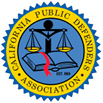Overview:
Whenever you get into a car accident, however minor, California law requires you to stop and exchange information with the other individual(s) involved in the accident. If you fail to do this, and leave the scene of the accident, you can be charged with hit and run driving. This applies to all car accidents, including those which only involve one vehicle (e.g., when a car hits a mailbox or a telephone pole.)
A hit-and-run can be charged either as a misdemeanor or as a felony, depending on whether the defendant injured or killed another person when they committed the act. In cases where injury does result from an accident where a defendant commits a hit-and-run; it still may be treated as a misdemeanor, depending on the facts and circumstances of the case. In these cases, the prosecution will take into consideration the nature and extent of the injuries inflicted as well as other factors such as the defendant's criminal record.
What is Hit and Run Driving:
Whether it is treated as a misdemeanor or a felony, hit-and-run driving involves the exact same behavior. It occurs when the driver of a vehicle fails to follow the proper protocol after being involved in a car accident.
So, what is the proper protocol?
When a driver is involved in an accident, the first thing they must do is pull over and stop at the nearest location where they will not interfere with the flow of traffic and will not put anyone's safety at risk. Once that is done, a driver involved in an accident must then exchange information with everyone else who was involved in the accident.
The information that must be exchanged includes their driver's license, their vehicle registration, and the current address of the driver as well as the registered owner of the vehicle. Note that exchanging proof of insurance or insurance policy information is not a part of the protocol for purposes of hit-and-run driving, even though that is otherwise required.
If the accident occurs, and there is no other person to exchange information with (e.g., the accident involved hitting a parked car while that car's owner was not present) then the driver must leave a note for the owner of any property that was damaged, describing the circumstances of the accident and the driver's name and address. Then, the driver must promptly notify the local police department or the California Highway Patrol.
When a hit-and-run accident involves only property damage (i.e., it did not result in the death of anyone, nor did it result in injury to anyone other than the defendant,) the crime is prosecuted under Vehicle Code section 20002, and it is a misdemeanor.
If the hit-and-run accident does result in the death of a person, or injury to someone besides the defendant; it can be prosecuted as a felony under Vehicle Code section 20001.
Examples of Hit-And-Run Driving:
- Mary is driving carefully to her boyfriend’s house one night when another vehicle suddenly slams into her car. Furious, Mary exits her vehicle but quickly discovers that her car is undamaged. After hearing a voice call for help, Mary looks over at the other vehicle and realizes that the other driver has sustained severe lacerations. Not wanting to get involved, especially since she didn’t cause the accident, Mary ignores the other driver’s request for medical assistance and drives away. Despite the fact that Mary didn’t cause this accident, she can still be found guilty of a felony hit and run for failing to follow the duties set forth in Vehicle Code 20001 and 20003.
- Nick is driving through a narrow residential street when he accidentally scrapes a parked car with his own truck. Knowing that he doesn’t have the money to pay for the damage, he quickly drives away, hoping that no one saw him. Nick can be charged with a misdemeanor hit and run because he failed to stop and leave his information on the damaged vehicle.
- Cameron is scared about being late to work for the third time this week, so he speeds through his small neighborhood going about 40 miles per hour. Suddenly, a small girl runs in front of Cameron’s car and Cameron ends up hitting her. Though Cameron feels badly, he’s more worried about getting fired, so he continues driving and assumes that the little girl is okay. Even though Cameron doesn’t know for sure that the small girl was injured or killed, he was aware that it was extremely probable that such a collision would cause injury or death to the girl. As such, he can be found guilty of a felony hit and run since he failed to stop and follow the proper protocol.
- While pulling out of her driveway, Lisa ends up backing her vehicle into her neighbor’s brick fence. Worried, Lisa inspects the fence but is pleased to discover that the fence was undamaged by the collision. Consequently, she drives away without leaving any information. Lisa’s actions do not constitute a misdemeanor hit and run because the accident did not cause any property damage.
How Does a Prosecutor Prove Hit-And-Run Driving:
To prove a defendant guilty of misdemeanor hit-and-run in violation of Vehicle Code section 20002, the prosecution must prove the following facts or elements:
- The defendant was in a vehicle accident that caused damage to another’s property; and
- The defendant knew that the accident had caused property damage (or was likely to have caused property damage); and
- The defendant willfully failed to: (a) stop immediately at the scene of the accident AND/OR (b) provide the owner of the damaged property with their name and current address (as well as the name and address of the owner of the vehicle if they do not own the vehicle themselves).
Felony hit-and-run driving requires the prosecution to prove:
- The defendant was in a vehicle accident that caused death or injury to someone else; and
- The defendant knew that the accident had caused death or injury to another person (or was likely to have caused death or injury); and
- The defendant willfully failed to:
(a) stop immediately at the scene of the accident;
(b) failed to provide their (and/or their injured passenger(s)’) license/identification to anyone involved in the accident, or to any responding police officer upon request;
(c) failed to provide reasonable and necessary assistance to anyone injured in the collision (such as arranging to transport the injured party to receive medical care if it’s required or requested); or
(d) failed to give anyone involved in the accident or any responding police officer the defendant’s (and/or their injured passenger(s)’) name and current residence as well as the registration number of the vehicle they were driving.
Penalties For Hit-And-Run Driving:
Misdemeanor:
Vehicle Code section 20002 violations are misdemeanors and can result in the following penalties:
- Imprisonment up to six months a county jail; and/or
- A maximum fine of $1,000; and/or
- Any other conditions for probation that a judge determines to be appropriate.
Felony:
Though it’s commonly referred to as “felony hit and run,” Vehicle Code 20001 is actually a wobbler crime, so it can be charged as a felony or brought down to a misdemeanor, depending on the case itself and the defendant’s own criminal history.
Additionally, Vehicle Code 20001 distinguishes between penalties depending on the severity of the injury involved in the accident. Specifically, the penalties are more severe if the accident in question caused a death or permanent, serious injury. (Note that, as used in Vehicle Code 20001, “permanent, serious injury” means the loss or permanent impairment of the function of a body part or organ.)
- If the hit-and-run results in only minor injuries:
- Imprisonment in a county jail or state prison for up to one year; and/or
- A fine of between $1,000.00 and $10,000.00.
- If the injuries are serious or permanent, but nevertheless reduced to a misdemeanor:
- Imprisonment in a county jail for at least ninety days, up to one year; and/or
- A fine of between $1,000.00 and $10,000.00.
- If the injuries are serious or permanent, or results in the death of a person and is treated as a felony:
- Imprisonment in a state prison for between two and four years; and/or
- A fine of between $1,000.00 and $10,000.00.
Common Defenses:
- The defendant did not actually know that he was involved in a collision. This defense tends to be more successful when the collision is minor, such that the driver could have reasonably failed to notice that an accident even occurred.
- Only the defendant was injured by the collision. If no one else is injured other than the defendant, then the defendant actually has no duty to stop and exchange information.
- The defendant was not actually involved in the accident because his car had been stolen or borrowed by someone else.
- The defendant did not willfully leave the scene of the accident. This defense tends to be used when it was not safe for the defendant to stop and stay at the scene of the collision.
Actual Cases:
Susan was involved in a fender bender rear-collision vehicle accident. After the collision the vehicle that Susan hit continued to drive away. Susan drove a ways down the road and then pulled to the side of the road. Susan’s intention was to determine whether the other vehicle had stopped so that Susan could discover whether the other car had been damaged. The traffic was heavy, and Susan could not figure out where the other vehicle was located. The police arrived and made contact with Susan. The police cited Susan for hit and run in that Susan did not exchange information with the other driver. I was able to convince the D.A. that Susan had done everything she could to contact the other driver and it was at no fault of her own that Susan could not locate the motorist. As a result of our arguments the District Attorney dismissed the charge against Susan.
Pedro was driving late at night and made a turn onto a freeway on-ramp. Pedro lost sight of the roadway and ran up onto the median and struck a sign, knocking it over. Pedro extricated his car, but did not know who to call about the damage. Pedro’s intent was to call the authorities the next day. A passing motorist saw Pedro’s vehicle intertwined with the sign and called the police. Peter was driving away as the police arrived, and the police pulled Pedro over. Pedro explained that he had not known what to do, but the police cited him for hit and run anyways. Pedro came to see me, and I was able to convince the District Attorney that Pedro acted in good faith and just did not know what to do. Pedro paid restitution for the broken sign and we were able to get the charge dismissed for him.
How We can Help
David Foos was a Superior Court Judge Pro Tem for 16 years where he heard thousands of traffic cases, many involving hit and run driving. As such, David is extremely knowledgeable with the laws and defenses involving hit and run driving. David has successfully litigated hundreds of hit and run driving cases and is familiar with the prosecutors trying such cases. David has the know-how and the experience to greatly benefit you if you are charged with hit and run driving. Call our Sacramento criminal defense attorney for a free consultation at 916-779-3500, or reach us on the web at Contact@foosgavinlaw.com.















